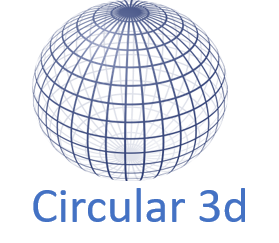Many of the world’s problems today result from not thinking for ourselves. We are accepting the status quo as normal and reason by analogy. That means, if we normally encounter difficult problems, our tendency is to rely on base level assumptions we have been told are true. We are doing things because it is like what other people are doing or because it has always been done like this. The process is quick and easy. However, it can also lead to unimaginative, linear solutions that closely resemble all previous approaches. With first principles instead, you ground yourself in the most fundamental truths and then reason up from there.
The thoughts of others imprison us if we’re not thinking for ourselves.
First principles thinking is one of the best ways for breaking down complicated problems, reassembling them from the ground up and finding original solutions. It also might be the single best approach to learn how to think for yourself and to move from linear to non-linear results. Innovations are not happening by following what others are doing, instead they are happening by challenging the status quo.
First Principles Thinking Explained
A first principle is a foundational proposition or assumption that stands alone. We cannot deduce first principles from any other proposition or assumption. Think of a first principle like an element. It cannot be broken down further. It is pure.
Nearly two thousand years ago, the ancient philosopher Aristotle defined the First Principle as the basis from which an individual knows a thing.1
“In every systematic inquiry (methodos) where there are first principles, or causes, or elements, knowledge and science result from acquiring knowledge of these; for we think we know something just in case we acquire knowledge of the primary causes, the primary first principles, all the way to the elements.”
Later he connected the idea to knowledge, defining first principles as “the first basis from which a thing is known.”2
Imagine the solution to a problem as a house. An assumption is the basis for a solution. A shoddy foundation will lead to the collapse of the house. If the foundation is solid, the house will hold up. First principles form a solid foundation for the house.
Reasoning by first principles removes the impurity of assumptions and conventions. What remains is the essentials. Using the essentials of this mental model will allow you to see where reasoning by analogy might lead you astray.
Examples of First Principles Thinking: Elon Musk and Space X
Reasoning from first thinking has been used for years by many successful people such as Aristotle (ancient philosopher), Johannes Gutenberg (inventor) and Charlie Munger (investor). However, no one has embraced the concept of First Principles Thinking in our modern world better than Elon Musk.The most fascinating thing about him is not what he thinks about but how he thinks. Here’s a statement from him:
“People’s thinking process is too bound by convention or analogy to prior experiences… You have to build up the reasoning from the ground up—“from the First Principles” is the phrase that’s used in physics. You look at the fundamentals and construct your reasoning from that, and then you see if you have a conclusion that works or doesn’t work, and it may or may not be different from what people have done in the past.”
In another interview he gave the following advice: “It is important to view knowledge as sort of a semantic tree. Make sure you understand the fundamental principles, i.e., the trunk and big branches, before you get into the leaves/details or there is nothing for them to hang on to.”
Rather than relying on intuition, Musk starts with bare facts. We think we know a lot about things, but in reality, we don’t. As opposed to the average person, Musk thinks in a completely different way. First, he decides what he wants to accomplish, such as building a rocket. After that, he dives into the problem’s first principles.
Rockets are very expensive, which was one of the problems he had to face when he wanted to send people to Mars. As he didn’t have the budget to buy a rocket, he asked himself, “Rockets are made of what?” The answer is: From copper, aerospace-grade aluminium alloys, carbon fibre and titanium.
He then wanted to know, “What are the prices of these materials on the market?” He learned that these materials were two percent the cost of a rocket.
But why is it expensive to get a rocket to Mars? As Musk loved learning and had a degree in both economics and physics, he started to teach himself rocket science. He came to the conclusion that getting a rocket is expensive because people are limited by conventional beliefs instead of using first principles thinking. He decided to create SpaceX to discover whether he can build rockets from scratch.
In the end, after lots of prototyping and testing, SpaceX was able to reduce the price to about ten percent of the existing price and has been dominating the market since then.
When to Use First Principles Thinking
Reasoning from First Principles will enable you to step out of conventional and historical wisdom and discover new possibilities. Once you understand the underlying principles, everything will start making sense.
First Principles Thinking is useful when you are:
- Trying to solve a complex problem
- Doing something for the first time
- Doing your best to understand a complex issue
You will improve your thinking in these three areas if you avoid making assumptions and letting others solve your problems.
People tend to believe that creativity is something that only a handful of people are born with, that you either have it or you don’t. Research studies have shown that this isn’t true. We are innately born with the potential of a creative genius, but the moment we enter the school system, we get dramatically dumbed down. It is not difficult to understand why this is the case. We all have the potential to be creative geniuses, but our education dramatically dumbs us down. It is not difficult to understand why this is so: The school is an institution that has historically been put in place to ultimately serve the needs and wants of the ruling class, not the common people. That’s why schools replace curiosity with compliance.
As adults, we tend to think conventionally because it’s easier than thinking for ourselves. By using First Principles Thinking instead, we can find creative solutions to complex challenges.
“Science is a way of thinking much more than it is a body of knowledge.”
Carl Sagan
Techniques for Establishing First Principles
First principles can be established in a variety of ways; let’s look at a few of them.
Socratic Questioning
In Socratic questioning, truths are established, underlying assumptions are revealed, and ignorance is separated from knowledge. Unlike normal discussions, Socratic questioning strives to draw out first principles in a systematic manner. By surfacing knowledge that was previously outside of our awareness, the technique produces insightful perspectives and helps identify positive actions. In general, it goes like this:
- Explaining your ideas and clarifying your thinking (Why do I think this? What exactly do I think?)
- Challenging assumptions (How do I know this is true? What if I thought the opposite?)
- Looking for evidence (How can I back this up? What are the sources?)
- Analysing alternative viewpoints (What might others think? How do I know I am correct?)
- Looking at consequences and implications (What if I am not right? What are the consequences if I am?)
- Reconsidering the original questions (Why did I think that? What conclusions can I draw from the reasoning process?)
As a result, you will stop relying on your gut instinct, limit strong emotional responses, and find creative solutions to complex challenges.
“The Five Whys”
Children instinctively think in first principles. Just like us, they want to understand what’s happening in the world. With the five whys, they intuitively break through the fog. For any trivial thing, like brushing their teeths, they are asking why, until they often get to hear from their parents: “Because we said so”.
The five whys turn to play out in the corporate world as well and many people don’t like them because most of them don’t know what they want to accomplish and those questions create unnecessary drag. Another reason why they find them challenging is that they often don’t know why. As a result of their own ignorance, they resort to self-defence. Especially in meetings this turns out to be the case: If you are asking people why they were doing something this way or why they thought something was true, first you often get a mild tolerance for this approach, but after three “whys” you most likely get to hear “ Let us talk about this later”:
It is, however, a very useful technique when you need to find the root cause of a problem, as illustrated by the following example:
Problem: We didn’t send the newsletter for the latest software updates on time.
- Why didn’t we send the newsletter on time? Updates were not implemented until the deadline.
- Why were the updates not implemented on time? Because the developers were still working on the new features.
- Why were the developers still working on the new features? One of the new developers didn’t know the procedures.
- Why was the new developer unfamiliar with all procedures? He was not trained properly.
- Why was he not trained properly? Because CTO believes that
new employees don’t need thorough training and they should learn while
working.
As you can see, the original problem turned out to be completely different from most people’s expectations. Furthermore, it is clear that it is a process problem rather than a technological one. Too often we neglect the human factor, while focusing on the product part of the problem.
Therefore, the 5 Whys analysis aims to inspect a certain problem in depth until it shows you the real cause. Keep in mind that “5” is just a number. Ask “Why” as many times as you need to complete the process and take appropriate actions.
Conclusion
As a result of first principle thinking, we are able to see the world as it is and what is possible, rather than being blinded by dogma. With other words: Everything that is not a law of nature is just a shared belief. Money is a shared belief. So is a border. So are bitcoins. The list goes on. Our society needs people who will challenge these common beliefs we have developed over the years and paint a picture of a better future.
Analogies can’t replace understanding. Your mind will always come up with assumptions when you are trying to solve a complex problem. While it’s easier for your brain to reason by analogy, you’re coming up with better answers when you reason by first principles. This is what makes it one of the best sources of creative thinking. The ability to think from first principles allows you to adapt to a changing environment, deal with reality and enables you to make better future decisions.
1 Aristotle, Physics 184a 10–21
2 Aristotle, Metaphysics 1013a 14-15
3 The Advocate: Kids are born creative geniuses but the education system destroys imagination




